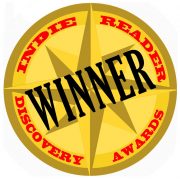I was halfway through the latest revision of Chasing the Light when I realized it needed a prologue. In a novel the prologue usually presents an event that belongs to the story but outside the plot – something happening beforehand or afterward or elsewhere that influences or explains the main action. I wanted the prologue to Chasing the Light to do more. Besides intriguing readers with a glimpse of the mystery, I wanted to introduce an objective narrator.
Part one of the novel is told in third person entirely from the point of view of the protagonist, Kelly. Parts two and three include the perspectives of other characters as well. I worried that changing point-of-view characters so far into the story would be jolting. After a hundred or so pages, readers are used to seeing the world through Kelly’s eyes and, unless I’ve done something terribly wrong, they identify with her. Since the prologue has a narrative voice not associated with Kelly, it signals that the narrative is larger than her. At least I hope so.
Anyway, here is the prologue to Chasing the Light.

Prologue
A photograph tells only some of the truth. Viewers cannot know for certain what’s happening outside the frame the photographer has drawn around her subject, or what has happened and will happen after the image was frozen.
These four photographs are black-and-white and shades of gray
.
In the first, a young man and woman are craning their necks to face the camera of the photographer who stands over them. They are seated on a blanket with a Navaho pattern, surrounded by the remains of a picnic – bottles of Corona, a half-eaten hard roll, an open jar of Greek olives, a hunk of cheese on a board, a knife. A kind of metal pipe viewers would recognize if they smoked hashish. In the upper edge of the frame, beyond the blanket, are meadow grasses and the rangy weeds that some people call wildflowers. Stalks and blossoms of the same weeds are entwined in the woman’s hair, not artfully, but as though braided into her curls in idle moments and forgotten. They are beginning to wilt.
The couple is in their early twenties, no older, skin aglow with the freshness of childhood. The young man’s head is too big for his body. He has a round face, a snubbed nose and an undersized mouth tight with disapproval – of the bothersome flies or having his picture taken, or perhaps of something far worse that he would call evil. The woman’s mouth, dark with lipstick, hangs open. Her forehead is creased. A disturbance roils her eyes. She gazes beyond the camera to where something has drawn her attention, pulling her out of the framed moment.
She sees it coming and is afraid.
In the next photograph the couple is gone. A creek flows under a barbed wire fence. The angle suggests the photographer has crouched on the bank and aimed the camera low over the water, upstream. Nearby the water is transparent, and the topography of the riverbed hints at an underworld viewers cannot know. Beyond the fence, shadowed by trees, the water darkens and winds across the frame. The eye follows it to the edge.
The creek in the third photograph is narrower, rippling with current as it tumbles downhill. Again the angle is low, but this time the photographer has aimed her camera across the water and into a welter of trees. No focal point, it seems at first. But keep looking. After five seconds, maybe longer, the eye settles on the cross. Deep among the trees, carved in the trunk of an aspen with a blade too small, the cross is several inches high yet not as noticeable as the black knots and threads of lichen around it. But once seen, its wrongness stands out – the one unnatural detail in a landscape too wild to be framed. The knife cuts are fresh, and the purpose of the photograph is to record them.
X marks the spot.
The last photograph points down at a patch of forest floor that also looks wrong in subtle ways. Pine needles are unsettled, not packed as they would be after lying together a long time. The scattering of cones and twigs seems deliberate, like coconut sprinkled on a cake. And despite the unusual fluffiness of its cover, the ground looks sunken, as if the cake had fallen while baking.
Here lies buried the secret of the young woman’s fear.
No marker distinguishes this spot from any other on the vast mountainside. The photographer has led the viewer from the border of nowhere into its heart, trusting someone will care enough to follow the trail laid out in her photographs, that even after winter has come and snow has fallen, someone will wander the wilderness in search of a grave.




